African Violets
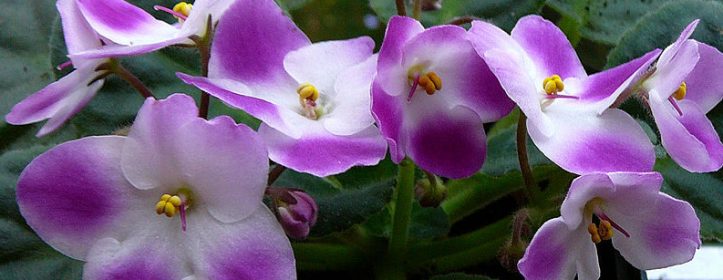
African violets (Saintpaulia) belongs to the family of plants known as Gesneriads. This family includes many other showy flowering houseplants including: Episcia, Streptocarpus, Columnia, Hypocyrta, Boea and many others. Care and culture of these fibrous rooted gesneriads are about the same as that for African violets. The original wild species grow in Africa from near sea level to about 3,000′. They grow only in partial shade in soil that is well drained but rich in organic matter. To get your potted violet to thrive, you must try to simulate the natural environment of their wild ancestors.
Understanding how and when to water your violet is crucial to success. The best way to know if your violet needs watering is to feel the surface of the soil. If the soil feels dry to the touch, you should water. African violets can be watered from the top or from the bottom by setting them in a tray of water. In either case, be sure to use water that is just warm to the touch. On sunny, bright days it is best to water early in the morning or late in the afternoon. This is because sunlight, passing through water drops on the leaves will cause spotting. On cloudy, dark days, you may water anytime and not be concerned with water that contacts the leaves. If you bottom water, be sure to remove the violet from the water-filled tray as soon as the soil is completely moist. Don’t water again until the sur-face of the soil feels dry to the touch. If you keep them soggy all the time, you will promote crown rot.
Proper light is the next requirement to meet for success with your violet. In their native environment African violets are never exposed to the direct rays of the sun. The light they receive is filtered through the leaf canopy of the forest. In your home you can duplicate this light by placing your violets in a north window (which never gets direct sun) or in an east or southeast window protected with sheer curtains. African violets will also thrive when grown under fluorescent or grow lights. Artificial light gives you complete control over the quality and quantity of light your violets receive. Those with darker leaves and darker blossoms will usually tolerate more light that lighter varieties such as those with white or light pink flowers.
African violets are also sensitive to temperature and humidity. The ideal is 64 to 70 degrees at night and 70 to 85 degrees in the daytime. Low temp-eratures will cause the plant to grow slowly and the leaves will be short, hugging the pot. Too much heat and they become leggy with few flowers. Here in the north, our heating systems will often dry the air, making it hard on our humidity-loving violets. Humidifiers will help a great deal. You can also provide humidity by placing your African violets on a tray filled with gravel and water. The gravel will keep the pot from sitting in the water. Moisture evaporating from the surface of the tray will waft upward, increasing humidity around the leaves of the violet.
Violets that are flowering should be fed “Peter’s African Violet Food” about once a week. After flowering, reduce feeding to once a month.

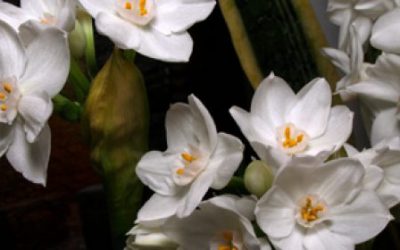
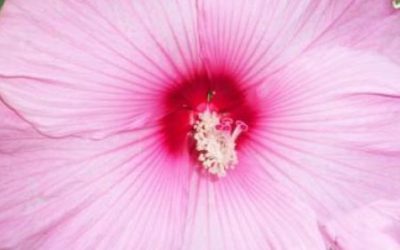
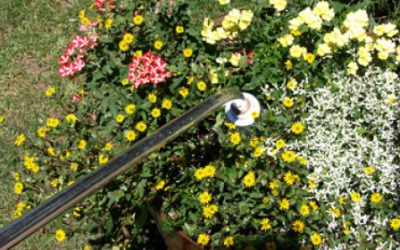

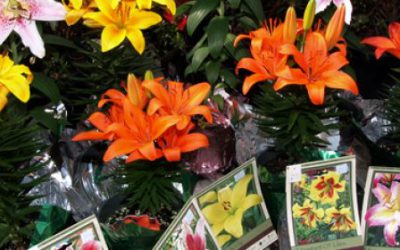
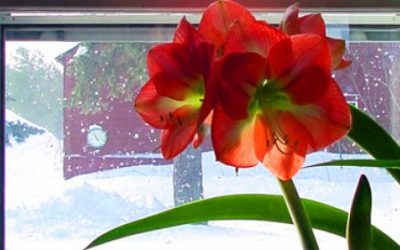
Recent Comments